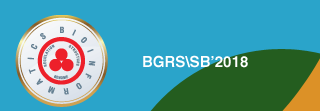Chairs
Mikhail Moshkin, ICG SB RAS, Novosibirsk, Russia
Annotation
Creation, study and application of new lines of model organisms is one of the fastest growing areas of animal genetics. Today the total number of genetic strains of laboratory mice is over 200 thousands genotypes which greatly exceeds the total number of species in the class of mammals – 5416 (1). Genetic diversity of model organisms, as an independent branch of science is based, on the one hand, on the methods and techniques of genetic engineering, molecular and cell biology, breeding genetics, biochemistry, physiology, immunology, and ethology, on the other hand, it serves as a basis for revealing the fundamental mechanisms of living systems functioning. It creates opportunities for modeling a wide variety of human pathologies, including personalized features of disease, provides environment for searching and testing of new diagnostic, prevention and treatment of diseases.
Genetic diversity of model organisms such as the target area of the interdisciplinary integration of different areas of biology, will include a discussion on wide range of issues, including:
- Genetic engineering technologies of new genetic lines of model organisms creation.
- Genetic and experimental models of pathologies.
- The combinations of the genomes of the host and microflora metagenomes as new objects in biomedicine.
- New types of animals in translational biology.
- Technology exchange, accumulation and maintenance of genetic diversity in model organisms.
- Highly phenotyping of new genotypes at different levels of biological organization – molecular, cellular, organ and organism.
- Model organisms, as a basis for the search for new diagnostic markers and new pharmacological targets.
- Testing of new diagnostics, prevention and treatment of diseases in the appropriate models of pathologies.








